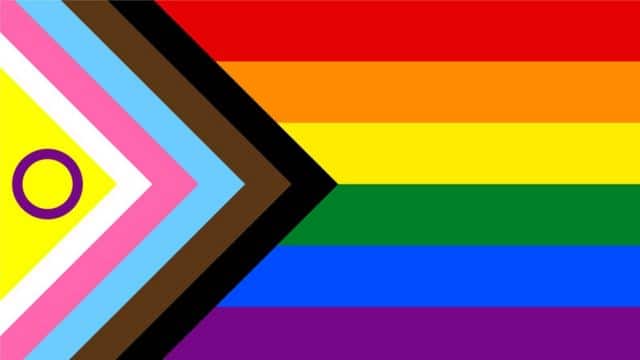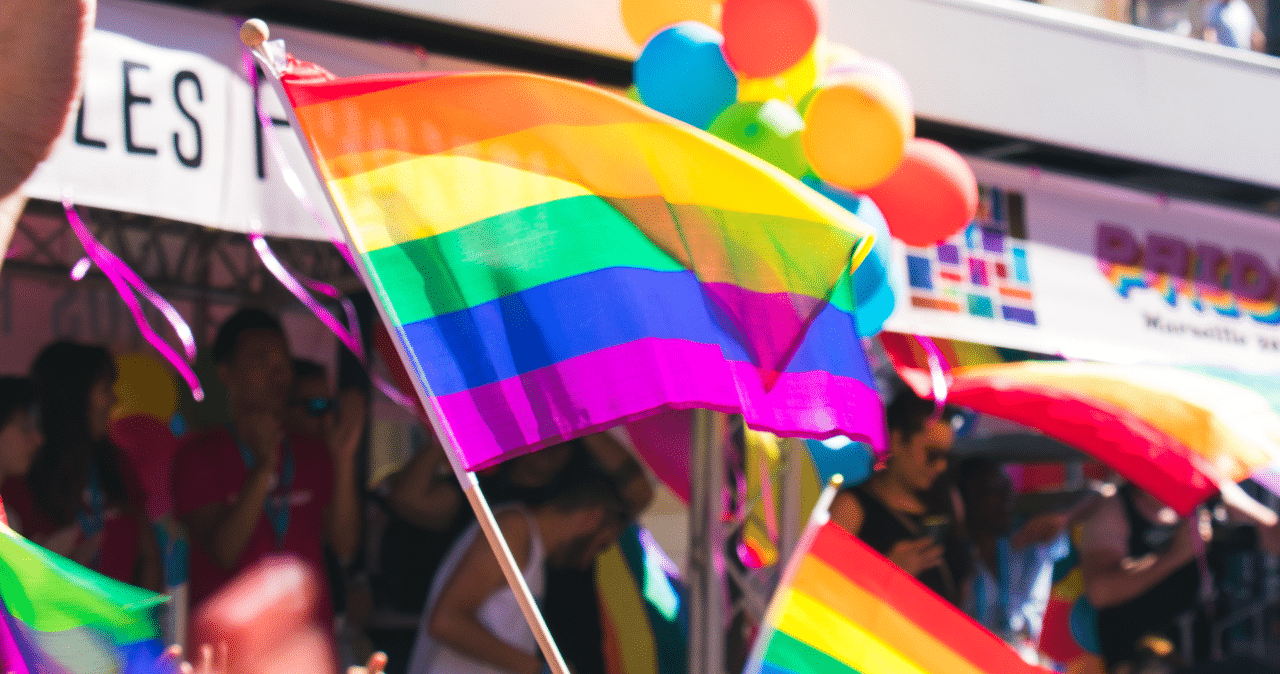As June comes to a close, Pride month has been a time of both celebration and questioning of potential rainbow-washing. Corporate social media accounts will soon be updating their profile pictures to take down the rainbow variant of their logos, but what is the true impact of rainbow-washing on businesses’ identities, and the actual effects it can have on the LGBTQIA+ community?
What is ‘rainbow-washing’?
Rainbow-washing is a term used to describe the ever-growing use of pride-based corporate branding and communications without a genuine desire to make a meaningful impact or take a stance. It is a hollow action that sees corporations leverage the visibility of what began as, and still is, a struggle for human rights, recognition, and protection for the queer community.

Like greenwashing, it centres on following the ‘status quo’ of what you think you should be saying with your brand without having a clear notion of what you’re tangibly doing to help or impact the cause you’re talking about. Following the crowd isn’t always the best route in PR, and younger generations and members of the LGBTQIA+ community are speaking out against brands they deem to be rainbow-washing.
When International Pride Month begins, rainbows become the visual identity of everything from corporate giants to local businesses. As years have progressed and Pride month has taken centre stage in UK culture, brands are being questioned on the authenticity of their messaging beyond the updated rainbow profile picture.
The act of updating visual branding to the Pride rainbow in June has almost become a cliche, an often-joked-about act within a short space of time because of routine predictability. As more businesses are coming under scrutiny for not evidencing work to support and protect these communities, the term rainbow-washing was birthed from frustration and anger.
What is the current landscape of Pride?
It’s not all doom and gloom. The world is progressing, and positive changes are happening day by day. Businesses are becoming more inclusive, and steps are being taken to integrate DE&I policies into their corporate DNA, with 44 per cent of businesses saying their executive teams ‘own’ their DE&I strategy.
When approaching Pride month, it’s crucial to pause for a moment and think about what your company really wants to say. Businesses can be ‘cancelled’ at a moment’s notice in the online age, and when being shown to back something, businesses are now expected to be meaningfully acting on it. Actioning a simple pride rebranding for one month can potentially damage a brand within the very community you’re appearing to be supporting.
The start of Pride month with the rainbow-tinted tidal wave becoming somewhat of an internet phenomenon, in its reflection is the July 1st aftershock of returning logos back to their ‘non-prideifyed’ versions. Take a moment to consider a consumer’s Facebook feed – one day a sea of logos supporting the LGBTQIA+ community and in the blink of an eye it suddenly stops. Many aren’t stopping their support point blank, but it’s vital to consider the visual impact this has for those external to the business.
Pride marketing
Those who do something for the queer community that is tangible can claim even a baseline allyship resulting in actual positive outcomes for both the business and, more importantly, the community. The queer community comprises an immensely broad spectrum of individuals, just like the non-queer community does. Supporting the queer community is about legitimately acknowledging people’s human rights and understanding the hurdles LGBTQIA+ people face on a day-to-day basis for their freedom and safety.
When approaching Pride month marketing, take a moment to think about whom you are targeting and its intended purpose. It is a time to celebrate and highlight the LBGTQIA+ community, but also consider it a time for education, storytelling, and more serious communication.
What can businesses do to minimise rainbow-washing?
The fear of doing Pride month wrong can put businesses off interacting with the occasion at all. Getting involved in Pride month doesn’t need to be difficult. The first thing businesses can do and should do is take a hard-line stance on LGBTQIA+ discrimination. These changes start internally for businesses; only then can your Pride month communications can be viewed as authentic. Businesses should establish clear penalties for discriminatory behaviours and enforce them if necessary.
Creating an inclusive environment for employees and customers is another strategy. By adopting diverse hiring practices, you make it clear that your business welcomes applicants from all communities. You can enhance the business by engaging with people from a variety of backgrounds, with 75 per cent of organisations having diverse and inclusive decision-making teams projected to exceed their financial targets last year.
One of the most important ways businesses can support the queer community is to educate themselves. Everybody knows the LGBTQIA+ community has historically been denied basic human rights, but learning and understanding the impacts this has had and is having on communities today is key to understanding today’s landscape and why Pride is important.
Business leaders need to ensure they are setting these precedents across their organisations, and that they are being stuck to.
When it comes to “rainbow” marketing, Pride isn’t just for June, it’s for lives.
To find out more about Pride month and the LGBTQAI+ community, check out Stonewall’s website for helpful guides and relevant information packs.








